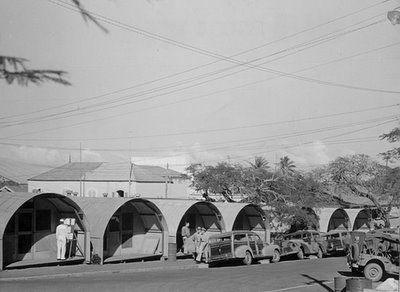
The Quonset hut was a portable, easy to construct architectural unit that allowed for the rapid deployment of forward bases in war zones. A hut could be flown in by helicopter and just as easily removed.
Whole cities could be built in a day.
The Quonset contributed, in many subtle and overlooked ways, to the global, mid-20th century spread of U.S military power. By enabling a new kind of nomadic military utopia – or, modular instant cities maintained on inhospitable terrains – the Quonset hut literally sheltered America’s overseas Army presence.
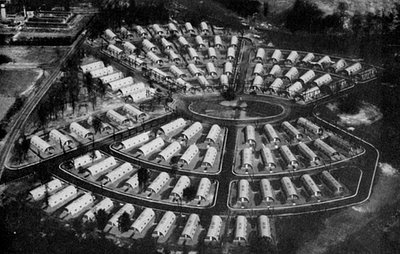
“During the housing crunch of the late 1940s,” however, as a press release from the National Endowment for the Humanities explains, “thousands of people across the nation converted these surplus military huts into unconventional homes, churches, and restaurants. Today, the Quonset has largely vanished from most of the American landscape – and most people’s memory.”
A new book and exhibition hope to correct that fading memory.
As these photos from that book show, the Quonset has many cool uses – and could even experience something of a renaissance in today’s pro-prehab architectural climate.
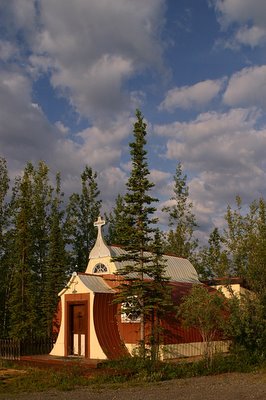
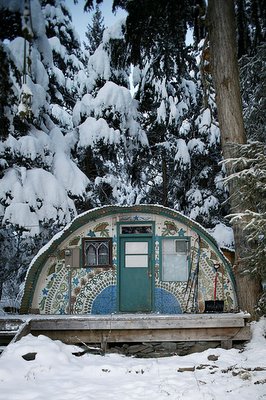
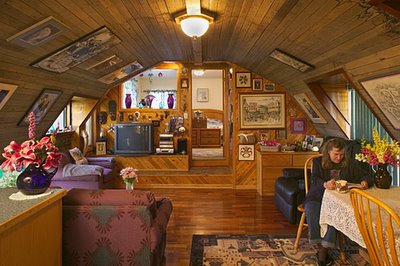
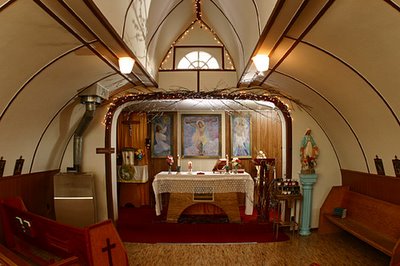
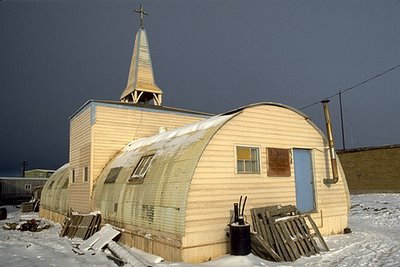
I, personally, would love a little BLDGBLOG village out in the desert somewhere, made entirely of Quonset huts: I could write books, use solar power, watch the stars…
(Via Archinect‘s omnipresent Bryan Finoki).
I think a factoid has crept in to your post. It wasn’t Bucky Fuller, but the George A Fuller Co. that helped originate the Quonset hut. (based on the British Nissen hut from WW I).
Quonsets are a great piece of design, which we can still learn from today.
Oooh – interesting. Thanks for the clarification. I might change that, actually, so if you come back and the factoid’s gone…
Thanks again.
Really Kool Pics of the Quanset Huts and I appreciate the article.
I’m old enough to remember seeing quonset huts in use for various purposes in many parts of Los Angeles when I was a kid. In fact, there was still one on Walnut Street in Pasadena as recently as 1986. I can’t remember what was in it– I have a vague impression that it was a welding shop, but I’m not sure. I haven’t been back to Pasadena for twenty years, I don’t know if that hut is still there or not. I wouldn’t be surprised if it was. Those things were remarkably durable when properly maintained.
I’m fascinated by the chapel interior with clerestory. Any idea where it’s located?
“Quonsets usually were constructed for military use, says Chris Chiei, architect and artistic director for the Alaska Design Forum, an arts organization. He’s also the author of “Quonset Hut: Metal Living for a Modern Age” (Princeton Architectural Press, 2005).”
Chris Chiei & Julie Decker and a few others who wrote this book can answer a lot of your quonset hut related questions. The book is worth every penny, especially if you live in one. We do and our copy of the book was signed by Chris. 8-P
John in Tucson, AZ has one, I will send pics! I’m just broke ground and I will post more later! I hope you all will enjoy!
Well it’s been almost 1 year from my last post (John In Tucson) and it’s been a chore to put this beast up the Q-hut. Here is the start of my blog and there will be more to come!
http://tucsonquonset.blogspot.com/
i lived in a quonset in chicago on pittsburgh ave in about 1953. There were many of them. I don;t remember much about the inside,i just rememeber there was no grass and it was dusty and dirty around the huts. My parents are both deceased, so i can;t ask them the particulars.
i do know they were built for housing shortage after ww 2 and Korean war.
I too lived on Pittsburgh AVe., Mary. Would like to connect with you and invite you to our facebook Group, Thatcher Homes. Have found many people from the 4300 block of Ptsbrgh.
Where did you live on Pittsburgh? I lived on the south end in a barracks, 47-54
Hey, Mary Pat…I lived on Pittsburgh too. What was your address? WE have a facebook group for former residents…Thatcher Homes of Norwood Township – temporary WWII veterans housing. Join us….Last name???
Would like to connect with Mary Pat if she left an email address in your database.?? It appears it is required to post a comment??
Hey Bruce—Mary Pat’s email was not recorded by the system, unfortunately, only her Blogger profile page. Sorry about that, but good luck; hope you can make contact.
Is there a way to find her Blog page?
Bruce, unfortunately, the only page that comes up is this empty bio page from Blogger. It looks like, if Mary Pat once had a blog associated with that account, she has either deleted the blog or de-linked it from her profile.